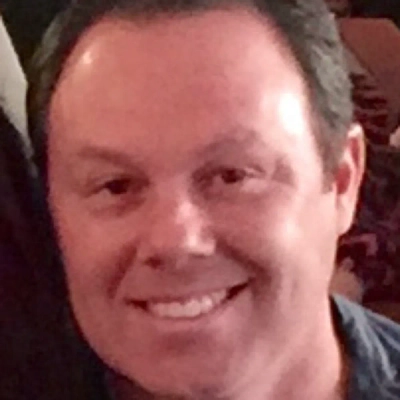We asked industry experts how they stay up-to-date on the latest trends and changes in their target markets. Here are their strategies for keeping your finger on the pulse of your market—and how staying informed helps you adapt your customer acquisition strategies. Learn how to best anticipate changes and make informed decisions for your business.
- Combine Industry Reports and Peer Networks
- Engage Deeply with Healthcare IT Ecosystem
- Listen Actively in Creator Communities
- Leverage AI for Trend Tracking
- Learn from Niche YouTuber Reviews
- Build Relationships with Sales Representatives
- Monitor Long-Tail Keywords and Community Conversations
- Follow Industry Blogs and Attend Webinars
- Analyze Real-Time Search and Forum Data
- Study Ad Platform and Website Behavior
- Conduct Monthly Trend Deep-Dives
- Hold Regular Client Retrospectives
- Review Industry Publications and Reports
- Leverage Age as Strategic Advantage
- Follow Industry Experts on LinkedIn
- Blend Data Analysis with Industry Engagement
- Subscribe to Leading Industry Newsletters
- Attend Trade Shows and Network
18 Ways to Stay Up-to-Date on Trends
Combine Industry Reports and Peer Networks
One way I stay up-to-date on trends in the fast-moving oil and gas market is by combining insights from industry reports, trade publications, and peer networks. The energy landscape can shift rapidly—commodity prices, regulations, and drilling activity all impact our deal flow.
Early on, we noticed that relying on a single source left us reacting too slowly to basin-level changes. So, I started reviewing weekly reports from the EIA, subscribing to Oil & Gas Journal, and staying active in groups like NARO and IPAA. This multi-channel approach gave us a 360-degree view of market sentiment and landowner behavior.
It helped us spot acquisition windows others missed—like when mineral owners became more open to selling during downturns. By staying informed, we were able to fine-tune our outreach strategy, build better seller profiles, and target regions with rising interest before competitors caught on. That proactive insight continues to be a major edge in our customer acquisition strategy.
 Ryan Moore
Ryan Moore
Founder & CEO, Pheasant Energy
Engage Deeply with Healthcare IT Ecosystem
In healthcare IT, staying current isn’t just about reading headlines—it’s about deeply engaging with the ecosystem. I regularly track regulatory updates, clinical trends, academic research, and user feedback to understand how shifts like AI diagnostics, FHIR standards, or patient engagement innovations are reshaping needs.
For example, when top systems like Mayo Clinic prioritized data liquidity, I went beyond surface updates. I attended workshops, studied technical papers, and spoke directly with stakeholders. This gave me insight not just into the “what” but also the “why” and “when,” letting me anticipate market shifts.
This awareness directly sharpens my customer acquisition strategies. Instead of using generic pitches, I tailor messaging to reflect real-world pain points, whether it’s reimbursement hurdles in telehealth or ethical concerns around AI. A great example was when telehealth billing complexities became a hot topic; by proactively emphasizing compliance features, we boosted engagement and conversion.
In a fast-evolving sector like healthcare IT, staying informed lets me position solutions as relevant and future-ready—helping us win trust, adapt faster, and lead with credibility.
 Riken Shah
Riken Shah
Founder & CEO, OSP Labs
Listen Actively in Creator Communities
I believe one of the most effective ways we stay on top of trends in our target market is by actively listening in creator-focused communities. We’re embedded in groups on Slack, Discord, and private LinkedIn circles where marketers, founders, and brand strategists share what’s working, what’s not, and what they’re experimenting with. These are our customers, and their day-to-day struggles are the earliest indicators of what content formats or strategies are about to shift.
For example, when we noticed a spike in conversations around AI-driven repurposing tools and short-form video workflows, we quickly pivoted to offer content packages built around that demand. That move helped us land three new clients in the SaaS space who were all trying to scale content without burning out their teams.
Staying informed keeps us ahead of the curve, not just keeping up with it. It allows us to adjust not only what we sell but how we position it, so our acquisition strategies stay relevant and responsive.
 Vaibhav Kishnani
Vaibhav Kishnani
Founder & CEO, Content-Whale
Leverage AI for Trend Tracking
When I founded my company, my vision was simple: to create a next-gen learning experience that adapts to users, not the other way around.
But here’s something I learned from my past experience as a Product Manager: what your business thinks people want and what they actually need are rarely the same. You can have a strong vision and a detailed roadmap, but if you build in isolation, you risk missing the mark.
In tech, and especially in AI, things move fast. One week a tool is revolutionary, the next it’s outdated. Staying on top of trends isn’t just about being “in the know”; it’s about keeping your platform relevant and competitive.
I use AI myself to track trends, whether that’s through predictive tools, sentiment analysis, or market insight platforms. AI allows me to catch shifts early, adapt faster, and identify emerging patterns in how users learn, interact, and consume content.
Meanwhile, machine learning keeps our product evolving in real time. The more our users interact with the platform, the more personalized and effective it becomes. ML isn’t just a buzzword; it’s part of how we stay lean, responsive, and innovative.
Customer Acquisition = Collaboration
One of the biggest lessons I’ve learned? Your users aren’t just customers; they’re co-creators.
Especially early on, it’s crucial to stop assuming and start listening. We treat our users like partners. We ask them to break things, tell us what’s missing, and help shape the product. Their feedback feeds directly into design and development, not just a backlog.
This mindset has impacted everything, from onboarding to pricing. It’s not about pushing people through a funnel; it’s about building real value with them.
Entrepreneurship isn’t about clinging to your original idea and sticking to it; it’s about evolving it into something people truly want. That only happens when you stay curious, adapt fast, and listen well.
We are still evolving, and we have big ambitions ahead. But if there’s one thing I’ve learned so far, it’s this: if you want to build something people care about, let them help you build it.
 Livia Oboroceanu
Livia Oboroceanu
CEO, Founder, Acadova
Learn from Niche YouTuber Reviews
I watch niche YouTubers review tools in our space. They’re raw, honest, and close to user pain. I skip the polished ones and find newer voices. If multiple creators mention friction, I listen carefully. Their feedback often becomes our strategy blueprint. That’s where I catch trends before platforms hype them.
Once, three creators criticized an AI dashboard redesign. We quietly paused rolling out a similar change. That decision probably saved weeks of recovery work. Real-time input keeps us from pursuing the wrong direction. Staying informed allows you to move forward with awareness. It’s not trend-chasing; it’s future-proofing strategy.
 Jason Hennessey
Jason Hennessey
CEO, Hennessey Digital
Build Relationships with Sales Representatives
I build structured relationships with frontline sales representatives to gather real-time market intelligence that formal research often misses. Rather than relying solely on industry reports, I schedule regular conversations with sales team members who interact directly with prospects and customers daily.
When implementing this approach, I created a simple system where sales representatives share objections they’re hearing, competitive offerings being mentioned, and changing customer priorities. These informal insights often reveal emerging trends months before they appear in formal market research. For example, our team identified shifting budget priorities in our target market after several representatives reported similar comments from previously interested prospects.
This direct pipeline to customer conversations significantly improves our marketing responsiveness. When we noticed prospects increasingly comparing our solution to a new competitor’s feature, we quickly adjusted our messaging to address this comparison directly rather than waiting for comprehensive market analysis. For marketers looking to stay ahead of market changes, creating structured systems to collect and analyze frontline sales intelligence provides earlier warnings and more nuanced insights than traditional market research alone.
 Aaron Whittaker
Aaron Whittaker
VP of Demand Generation & Marketing, Thrive Digital Marketing Agency
Monitor Long-Tail Keywords and Community Conversations
I stay up-to-date on the latest trends and shifts in my target market—primarily women entrepreneurs, consultants, and creators—by monitoring long-tail keyword trends and community conversations. I use tools like Pinterest Trends, Google Search Console, and even Reddit and TikTok to spot what questions people are asking, what frustrations they’re voicing, and what new tools or ideas they’re exploring. I also stay plugged into creator and startup newsletters, which often surface subtle shifts before they hit the mainstream.
This helps me adapt my customer acquisition strategies in a significant way. For example, when I noticed a spike in people searching for “how to price services without undercharging,” I created The Instant Pricing Fix™ and aligned my content and funnel strategy around that intent. By tapping into what my audience needs in real-time—not just what I think they need—I can create sharper, more relevant offers that convert faster and resonate more deeply.
 Kristin Marquet
Kristin Marquet
Founder & Creative Director, Marquet Media
Follow Industry Blogs and Attend Webinars
One of the ways I stay up-to-date on the latest trends in the market is by continuously following industry blogs, attending webinars, and networking with thought leaders within my sector. This allows me to gain insights not only from well-established sources but also from real-time discussions around emerging trends. For example, when it comes to the travel industry, I regularly track new developments in incentive and loyalty programs, especially how brands are leveraging these programs to retain customers and enhance their experiences. Incentives, like exclusive travel offers or reward points, have become a key differentiator in competitive sectors, and understanding these shifts helps me tailor strategies for customer retention and acquisition.
Additionally, I make it a point to evaluate how consumer behavior is evolving, particularly within industries like eCommerce and travel. Customer preferences are constantly changing, and understanding what motivates them—whether it’s exclusive travel experiences, discounts, or other personalized rewards—allows me to better predict future demand and adjust our offerings. Incentive programs are now crucial in travel, where loyalty programs often turn a one-time traveler into a repeat customer. Knowing the mechanics behind successful loyalty programs enables me to adapt our acquisition strategies accordingly.
Staying informed helps me refine our messaging and promotional tactics to resonate with current and potential customers. For example, I’ve noticed that travelers are increasingly attracted to reward systems that offer flexibility and instant gratification. This means that a rigid, one-size-fits-all loyalty program might not work as well as one that allows customers to choose their preferred rewards, whether it’s a free trip or priority service. By incorporating these insights, I can enhance customer experiences and, in turn, improve acquisition strategies by aligning offers with what customers genuinely value.
By continually refining my understanding of industry shifts, I can craft more relevant marketing campaigns, improve customer engagement, and ensure that our acquisition strategies remain effective in an ever-evolving landscape. Keeping up with trends is crucial not just for remaining competitive but also for fostering long-term relationships with customers, particularly in industries like travel where loyalty and incentives play a pivotal role in maintaining brand loyalty.
 Michael Farmer
Michael Farmer
Head of Incentive Travel, Gapp Group
Analyze Real-Time Search and Forum Data
I stay current on market trends by dedicating time each week to industry newsletters and curated forums where peers discuss regulatory updates, new tech, and shifts in customer preferences. For example, when several discussions in these groups noticed rising concern over data privacy, I quickly adapted my outreach and resources to address those specific needs, which led to higher engagement from prospects.
Keeping a close pulse on these shifts allows for swift adjustments in customer acquisition tactics, whether it’s refining messaging, updating landing pages, or exploring new channels. This habit ensures that outreach always feels timely and relevant, helping to maintain strong connections and improve conversion rates in a rapidly changing environment.
 Manish Sharma
Manish Sharma
Founder, FinanceX
Study Ad Platform and Website Behavior
We stay ahead by tracking real-time search data, not just analyzing market events. We constantly monitor what traders and investors are searching for—from sudden interest in new brokers or crypto exchanges to shifts in hot assets like Bitcoin or gold. This gives us early signals before the broader media even catches on. Staying informed at the search level helps us adapt customer acquisition fast—tailoring our content, analysis, and messaging around what our audience actually wants right now, not three months ago.
 Shaun David
Shaun David
Senior Market Analyst, CleaRank
Conduct Monthly Trend Deep-Dives
One of the most effective ways I stay up-to-date on trends and changes in our target market is by constantly analyzing real-time data from our ad platforms, website behavior, and customer feedback. I monitor what services people are searching for, what keywords are converting, and how seasonal shifts or economic changes impact demand. I also stay plugged into industry forums, local community groups, and home services marketing networks—because what’s trending in a Facebook moms’ group in Chandler this week can be tomorrow’s spike in service calls.
Staying informed allows me to pivot fast. If I see that more homeowners are searching for “reverse osmosis installation” or that appliance repair calls are climbing in early summer, I can immediately adjust our ad copy, website content, and promotional offers to meet that need. It also helps us speak our customers’ language—using terms they search for, not just the technical ones our technicians use.
Ultimately, keeping a pulse on our market means our messaging stays relevant, our services stay top-of-mind, and we don’t waste time (or money) talking to the wrong audience. It’s how we keep growing in a highly competitive space—by always listening first, then acting fast.
 Lexi May
Lexi May
Marketing Specialist, Thomas Home Services
Hold Regular Client Retrospectives
One key method we use is a monthly Trend Deep-Dive + Operator Pulse:
Each month, I analyze platform analytics (search volumes, booking lead times, itinerary requests) to identify emerging hotspots or shifts in traveler intent.
I then check in directly with our on-island managers and local partners to validate whether those data points reflect sustainable demand or one-off promotions.
How it shapes customer acquisition:
- Targeted Messaging: If eco-resort searches spike among Millennial travelers, we adjust our ad copy and email sequences to highlight regenerative-travel features.
- Channel Reallocation: When lead times lengthen, we shift budget toward early-funnel channels (content partnerships, SEO) to capture planners further in advance.
- New Packages: Rapidly roll out micro-packages—e.g., “7-Day Conservation Retreat”—that directly address nascent trends before competitors catch on.
 Georgio Daher
Georgio Daher
CEO, islands.co
Review Industry Publications and Reports
We make it a point to stay close to our target market through regular client retrospectives—not just after projects, but also during long-term engagements. These are informal sessions where we ask clients what’s changing in their industry, what new tools they’re curious about, or what challenges are keeping them up at night.
Last year, during one such session with a manufacturing client, we picked up on a subtle but recurring concern: rising pressure to meet ESG compliance standards. At the time, it wasn’t even on our radar. But we took that insight seriously and began building a content and solution framework around sustainable digital transformation.
That move alone helped us connect with a wave of new prospects looking for exactly that guidance—and our inbound leads from ESG-related content rose by over 30% in the next quarter.
Staying informed doesn’t always mean chasing reports or trends. Sometimes, just listening more intentionally to your existing customers reveals the clearest path for acquiring new ones.
 Aslam Jeelani Mohammed
Aslam Jeelani Mohammed
Sr. Content Writer, Web Synergies
Leverage Age as Strategic Advantage
One way I stay up-to-date on trends in the self-storage market is by regularly reviewing industry publications and reports, especially those from platforms like Storable and organizations like the Self Storage Association. These sources offer insights into customer behavior, rental patterns, and emerging technology that directly impact how people find and choose storage facilities.
Staying informed helps me make smarter decisions about how we attract customers. For example, if I notice a trend showing more people are booking units through mobile devices, I’ll prioritize making our website more mobile-friendly and optimize our online rental flow. It also helps me adjust our promotions, digital marketing strategies, and even the types of units we highlight based on what customers are actively looking for. Being proactive instead of reactive allows us to stay competitive and meet renters where they are.
 Keith Hebert
Keith Hebert
Founder, SafeStorage365
Follow Industry Experts on LinkedIn
We manage more than 300 hospitals/clinics in 14 different countries.
I’m 28, a generation younger than most CEOs in the EMR space, so I treat my age as a strategic advantage. I am often on the road with a front-row view of what nimble startups are building. This lets me spot shifts, whether it’s a new interoperability standard or a workflow-simplifying UX pattern, which we can quickly put into our roadmap.
Healthcare is, unfortunately, a hard industry to crack, and without having a foot in the door, so to speak, it can be very challenging.
I do believe business in general is changing, and this industry is ripe for change.
Staying informed about emerging changes or trends in advance of them going mainstream, I do not think changes our customer acquisition strategy, but it certainly helps us stay ahead.
 Oliver Van Veen
Oliver Van Veen
CEO, Vannin Healthcare
Blend Data Analysis with Industry Engagement
I stay up-to-date by following industry experts on LinkedIn—people who are actively building their personal brands tend to be among the first to catch and share key trends. By keeping an eye on them, I get a filtered stream of high-impact insights without needing to comb through every major publication or email newsletter.
This approach helps me quickly adapt my marketing and content strategies as soon as changes emerge. It’s a fast, efficient way to stay informed and stay ahead.
 Maya Kirianova
Maya Kirianova
Content Manager, Hiveage
Subscribe to Leading Industry Newsletters
One of the most effective ways I stay ahead of the curve in my target market is by weaving together real-time data analysis with hands-on industry engagement. I regularly monitor key customer acquisition metrics—like conversion rates, channel performance, and cost per acquisition—using advanced analytics tools and AI-driven insights. This allows me to spot emerging patterns in customer behavior and market shifts as they happen, not after the fact. But I don’t stop at the numbers: I also immerse myself in the industry by attending webinars, joining professional associations, and networking with peers at conferences and online forums. These interactions provide invaluable context behind the data, revealing the “why” behind changing trends and surfacing new strategies that may not yet be widely adopted.
Staying informed isn’t just about knowledge for its own sake; it’s the engine that powers agile, effective customer acquisition. When I notice a dip in conversion rates or a surge in a particular channel, I can immediately test new messaging, adjust targeting, or reallocate budget to the most promising tactics. For example, if analytics reveal that a new social platform is driving higher engagement among a key demographic, I can pivot campaigns quickly to capitalize on that momentum. This data-driven, market-aware approach means I’m not just reacting to change, but anticipating it—often identifying opportunities for expansion or new customer segments before competitors do.
In a market where customer preferences and technologies are evolving faster than ever, this commitment to continuous learning and adaptation is what keeps my acquisition strategies sharp and my business growing. By blending actionable analytics with real-world insights from industry leaders and customers themselves, I ensure that every move is informed, intentional, and ahead of the curve.
 Dinesh Besiahgari
Dinesh Besiahgari
Frontend Engineer Ii, Amazon Web Services
Attend Trade Shows and Network
I subscribe to leading industry newsletters like LEDs Magazine’s weekly News & Insights and LED professional’s bi-weekly LpN to get the latest on product launches, standards updates, and market shifts (Endeavor, LED professional). I also make it a point to attend key trade shows (for example, the Electrical Wire Processing Technology Expo) to network with suppliers and see emerging cable and wire technologies in person (Wire Processing Expo). By staying plugged into these channels, I can tweak our product mix, refine our messaging, and launch targeted campaigns that resonate with what buyers need right now.
 Atul Singla
Atul Singla
MD, Cable House
 Ryan Moore
Founder & CEO, Pheasant Energy
Ryan Moore
Founder & CEO, Pheasant Energy
 Riken Shah
Founder & CEO, OSP Labs
Riken Shah
Founder & CEO, OSP Labs
 Vaibhav Kishnani
Founder & CEO, Content-Whale
Vaibhav Kishnani
Founder & CEO, Content-Whale
 Livia Oboroceanu
CEO, Founder, Acadova
Livia Oboroceanu
CEO, Founder, Acadova
 Jason Hennessey
CEO, Hennessey Digital
Jason Hennessey
CEO, Hennessey Digital
 Aaron Whittaker
VP of Demand Generation & Marketing, Thrive Digital Marketing Agency
Aaron Whittaker
VP of Demand Generation & Marketing, Thrive Digital Marketing Agency
 Kristin Marquet
Founder & Creative Director, Marquet Media
Kristin Marquet
Founder & Creative Director, Marquet Media
 Michael Farmer
Head of Incentive Travel, Gapp Group
Michael Farmer
Head of Incentive Travel, Gapp Group
 Manish Sharma
Founder, FinanceX
Manish Sharma
Founder, FinanceX
 Shaun David
Senior Market Analyst, CleaRank
Shaun David
Senior Market Analyst, CleaRank
 Lexi May
Marketing Specialist, Thomas Home Services
Lexi May
Marketing Specialist, Thomas Home Services
 Georgio Daher
CEO, islands.co
Georgio Daher
CEO, islands.co
 Aslam Jeelani Mohammed
Sr. Content Writer, Web Synergies
Aslam Jeelani Mohammed
Sr. Content Writer, Web Synergies
 Keith Hebert
Founder, SafeStorage365
Keith Hebert
Founder, SafeStorage365
 Oliver Van Veen
CEO, Vannin Healthcare
Oliver Van Veen
CEO, Vannin Healthcare
 Maya Kirianova
Content Manager, Hiveage
Maya Kirianova
Content Manager, Hiveage
 Dinesh Besiahgari
Frontend Engineer Ii, Amazon Web Services
Dinesh Besiahgari
Frontend Engineer Ii, Amazon Web Services
 Atul Singla
MD, Cable House
Atul Singla
MD, Cable House







